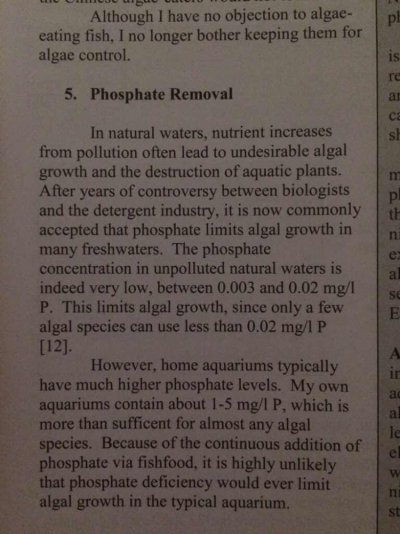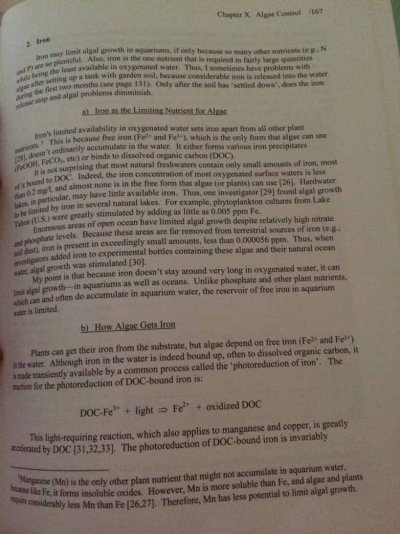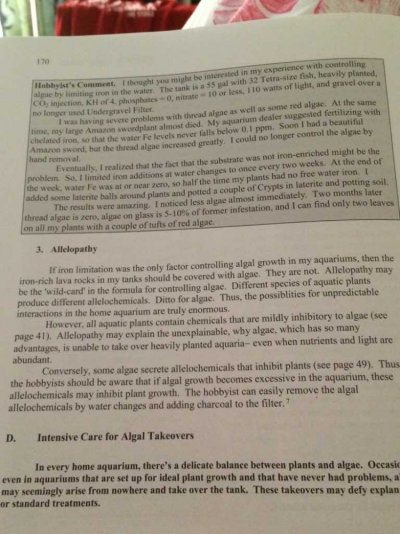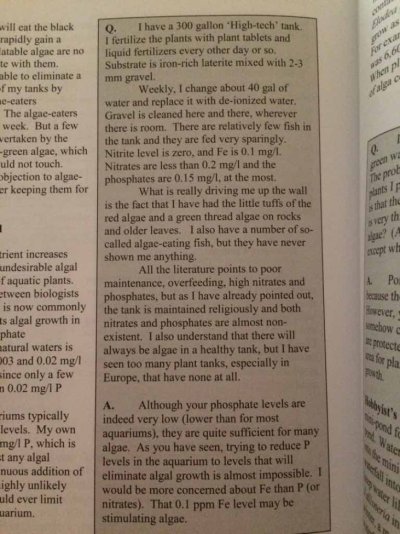jarrod0987
Aquarium Advice FINatic
- Joined
- Jul 12, 2005
- Messages
- 512
I am having a serious phosphate issue in my planted tank. Am trying to track down the source. One of the suspects was the fish food. I thought perhaps it had a phosphate preservative. There are 2 places on the ingredients that mention phosphate as part of another compound.
I left a small pinch of these flakes in dechlorinated tap water in a coffee mug to soak for a week.
I tested the levels with a Hanna ULR Phosphate Checker. That device is rated for Sea Water but I have consulted with Hanna Instruments and they have advised they do have customers that use that meter with fresh water. There other phosphate checkers work with both, and I have never seen a phosphate test that did not work with both. So I am confident this meter will be reasonable. Also...I did a 10x dilution of the sample in case the amount was very high. That will cause some error.
My findings were 21 ppb of phosphorus. Multiplied by 10x for the dilution correction is 210 ppb. Hanna states to convert phosphorus result to phosphate to Multiply by 0.003. That have 0.63 ppm of Phosphate. My tap water tests exactly the same at the time I set up the experiment.
It looks like dissolving did not extract any measurable amount of phosphate from the food. I did not notice any decomposition of the flakes. Bacterial action does not seem to have happened. I a not sure why. Had it happened there should have been some Phosphorus in the results. However, I had seen in my tank the Phosphate rise from 6ppm to 7ppm in 24 hours. It started close to 1 ppm from the tap and a week later was 6ppm. A day after that it was 7ppm. I had added 3 small pinches of flakes to help cycle which is why I was suspicious of the food but I don't really think that is where it came from now. It seems unlikely. The next suspect is the soil. Why it did not release huge amounts of Phosphate at the beginning I don't know. I scrubbed the phosphate out this past weak with GFO. It is around 0.6ppm now. I am going to discontinue the GFO and give it a week and not add any flakes. Will see what happens. There are live plants in the picture but there size did not change this week.
I left a small pinch of these flakes in dechlorinated tap water in a coffee mug to soak for a week.
I tested the levels with a Hanna ULR Phosphate Checker. That device is rated for Sea Water but I have consulted with Hanna Instruments and they have advised they do have customers that use that meter with fresh water. There other phosphate checkers work with both, and I have never seen a phosphate test that did not work with both. So I am confident this meter will be reasonable. Also...I did a 10x dilution of the sample in case the amount was very high. That will cause some error.
My findings were 21 ppb of phosphorus. Multiplied by 10x for the dilution correction is 210 ppb. Hanna states to convert phosphorus result to phosphate to Multiply by 0.003. That have 0.63 ppm of Phosphate. My tap water tests exactly the same at the time I set up the experiment.
It looks like dissolving did not extract any measurable amount of phosphate from the food. I did not notice any decomposition of the flakes. Bacterial action does not seem to have happened. I a not sure why. Had it happened there should have been some Phosphorus in the results. However, I had seen in my tank the Phosphate rise from 6ppm to 7ppm in 24 hours. It started close to 1 ppm from the tap and a week later was 6ppm. A day after that it was 7ppm. I had added 3 small pinches of flakes to help cycle which is why I was suspicious of the food but I don't really think that is where it came from now. It seems unlikely. The next suspect is the soil. Why it did not release huge amounts of Phosphate at the beginning I don't know. I scrubbed the phosphate out this past weak with GFO. It is around 0.6ppm now. I am going to discontinue the GFO and give it a week and not add any flakes. Will see what happens. There are live plants in the picture but there size did not change this week.




